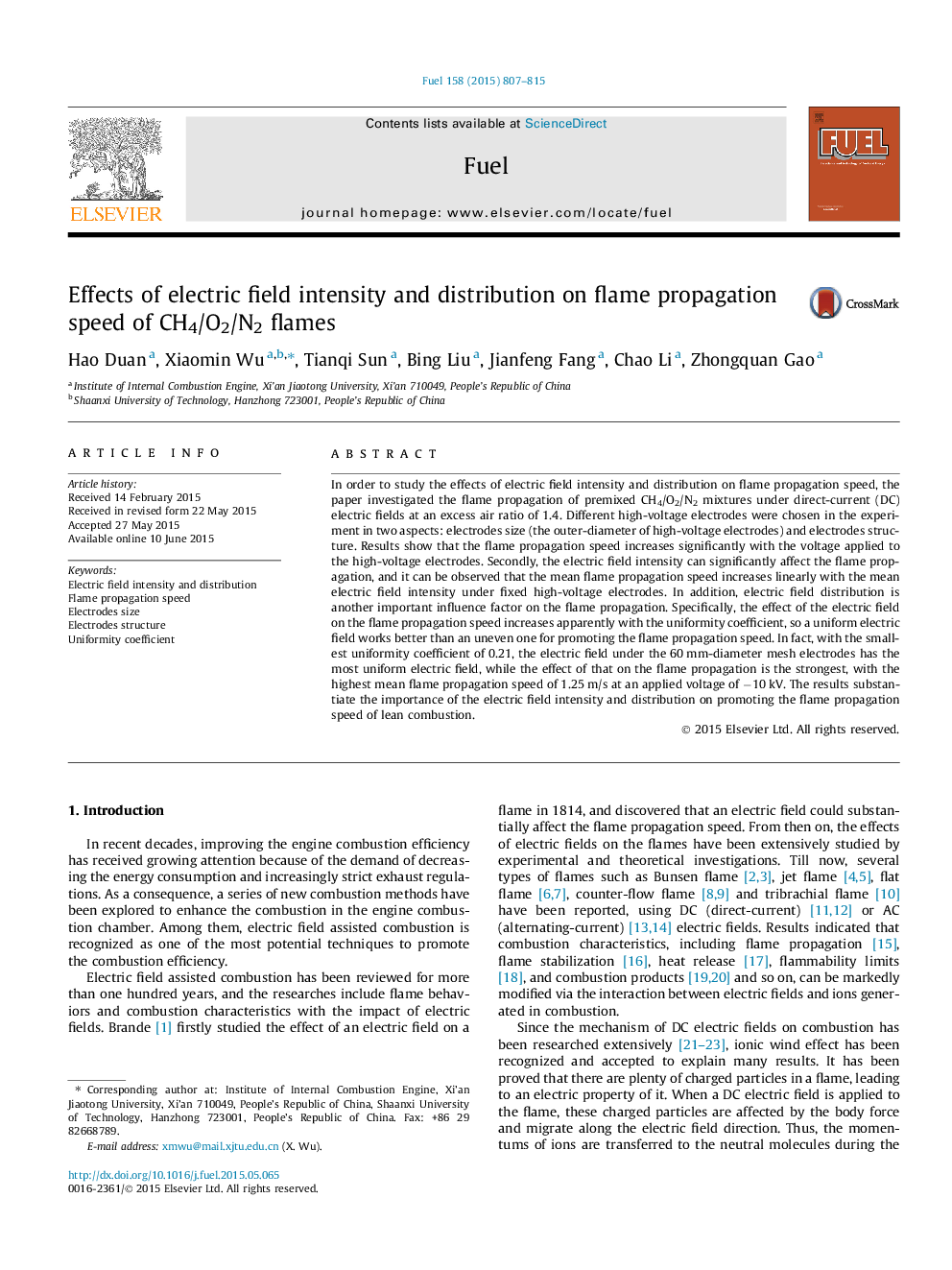| Article ID | Journal | Published Year | Pages | File Type |
|---|---|---|---|---|
| 6635169 | Fuel | 2015 | 9 Pages |
Abstract
In order to study the effects of electric field intensity and distribution on flame propagation speed, the paper investigated the flame propagation of premixed CH4/O2/N2 mixtures under direct-current (DC) electric fields at an excess air ratio of 1.4. Different high-voltage electrodes were chosen in the experiment in two aspects: electrodes size (the outer-diameter of high-voltage electrodes) and electrodes structure. Results show that the flame propagation speed increases significantly with the voltage applied to the high-voltage electrodes. Secondly, the electric field intensity can significantly affect the flame propagation, and it can be observed that the mean flame propagation speed increases linearly with the mean electric field intensity under fixed high-voltage electrodes. In addition, electric field distribution is another important influence factor on the flame propagation. Specifically, the effect of the electric field on the flame propagation speed increases apparently with the uniformity coefficient, so a uniform electric field works better than an uneven one for promoting the flame propagation speed. In fact, with the smallest uniformity coefficient of 0.21, the electric field under the 60Â mm-diameter mesh electrodes has the most uniform electric field, while the effect of that on the flame propagation is the strongest, with the highest mean flame propagation speed of 1.25Â m/s at an applied voltage of â10Â kV. The results substantiate the importance of the electric field intensity and distribution on promoting the flame propagation speed of lean combustion.
Related Topics
Physical Sciences and Engineering
Chemical Engineering
Chemical Engineering (General)
Authors
Hao Duan, Xiaomin Wu, Tianqi Sun, Bing Liu, Jianfeng Fang, Chao Li, Zhongquan Gao,
